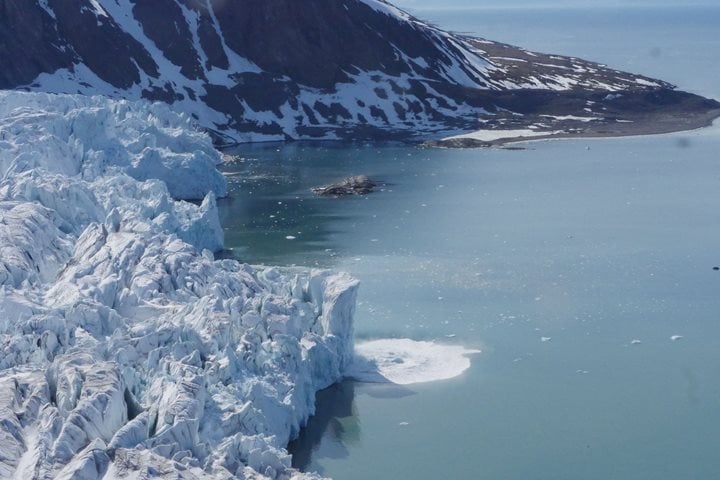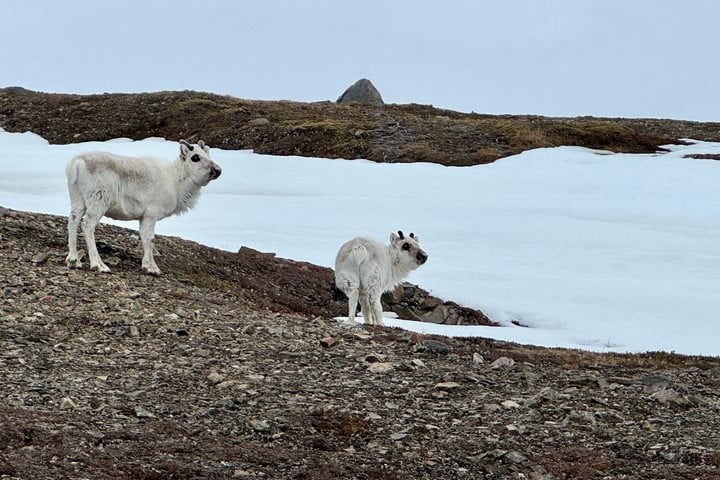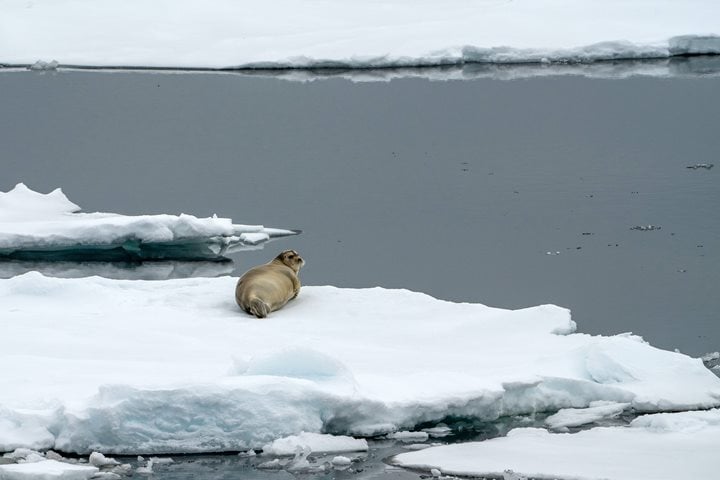One of the longest fjords in Svalbard drew our attention this morning; it’s some 70 miles long, running south to north on the largest island, Spitsbergen. The landscape to the eastern flank was open — a wide glacial landscape in which wildlife could hide and challenge us to find it. A pure white rock ptarmigan overlooked our comings and goings from high on the hill; it was a partner to the sentinels of our guiding team that stood watch with their rifles as we hiked into tundra filled with arctic plants just beginning to flower.
On the beach, a trapper’s cabin stood alone, a testament to an earlier era. Reindeer and fox bones, scattered by time, provoked thoughts of this wilderness frontier and its history. This landscape sometimes shows its treasures; sometimes they are hidden; sometimes they hide. Five juvenile male walruses slept near to the shore, and as we stood in their presence, we in turn were watched by others in the water. The watcher became the watched.







